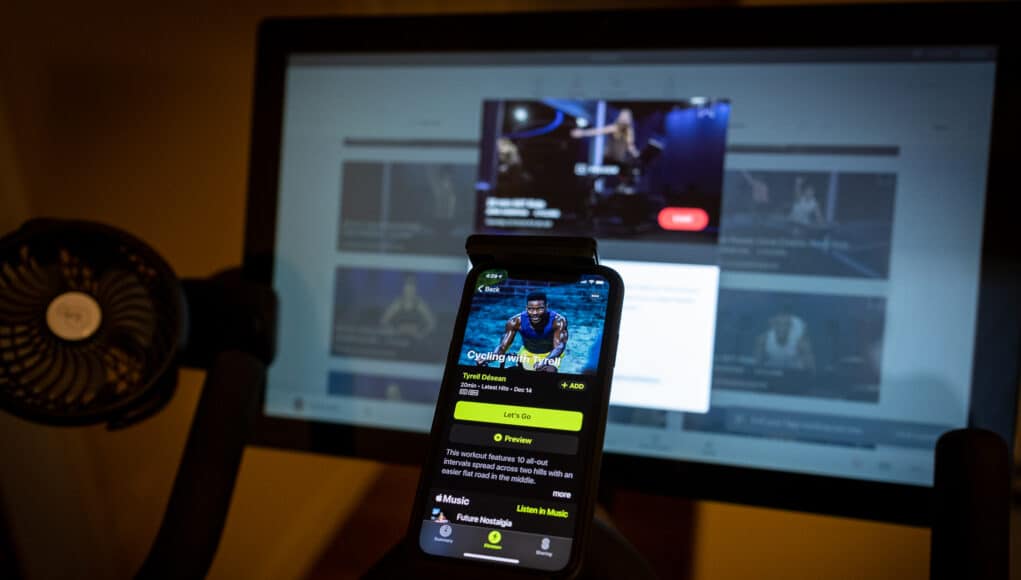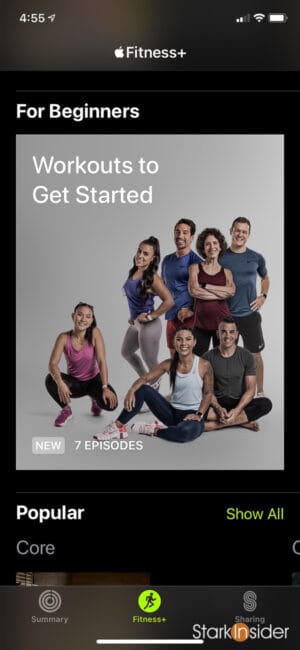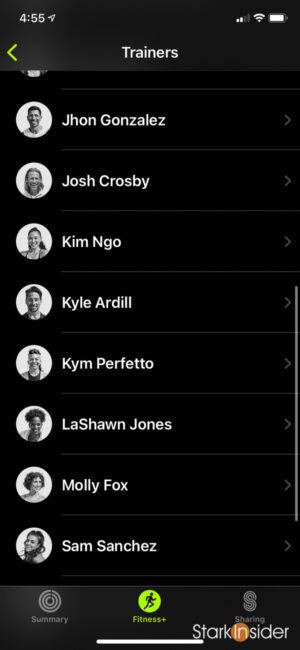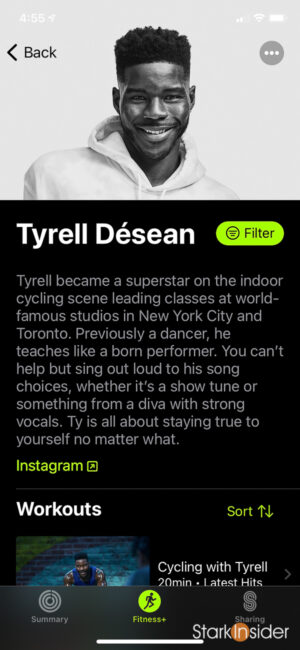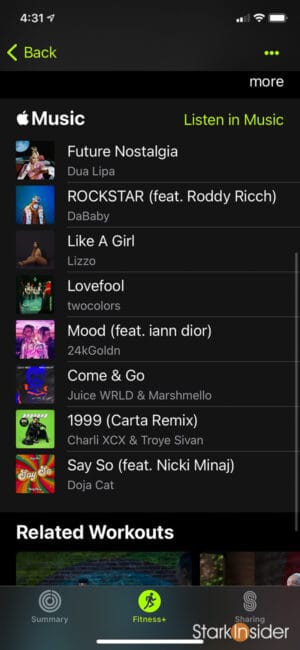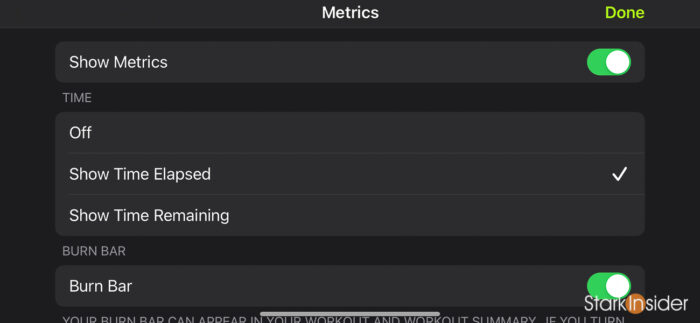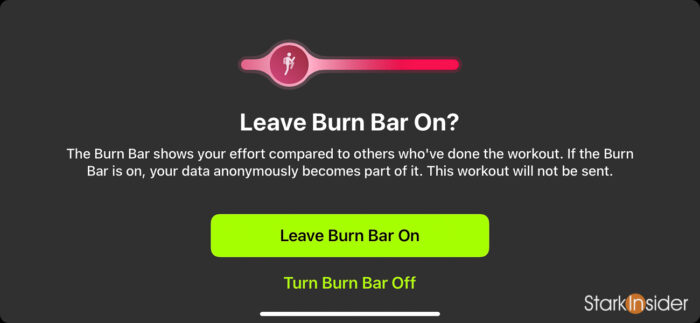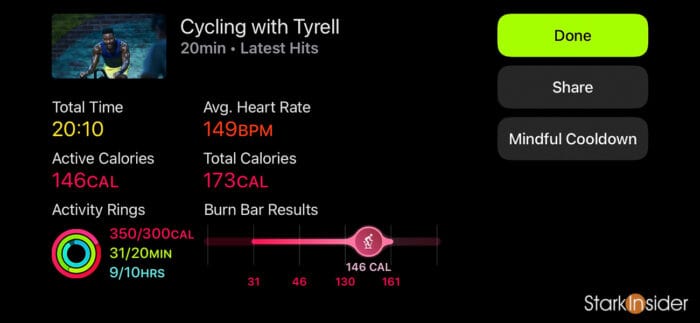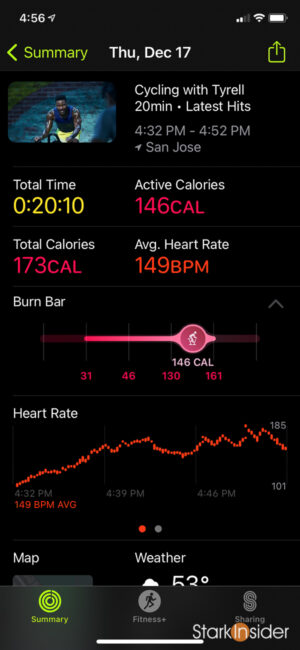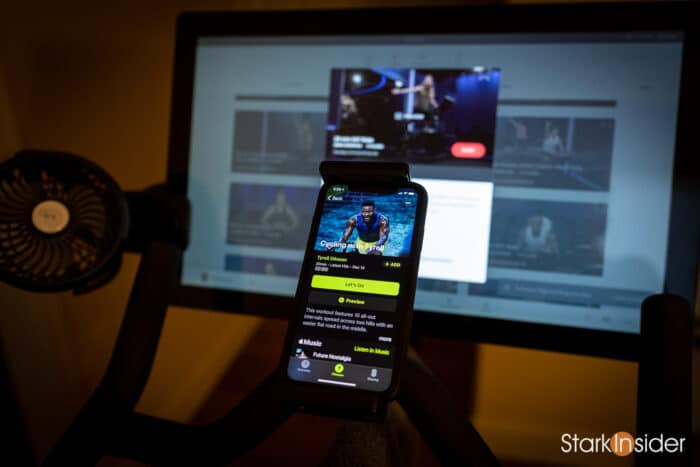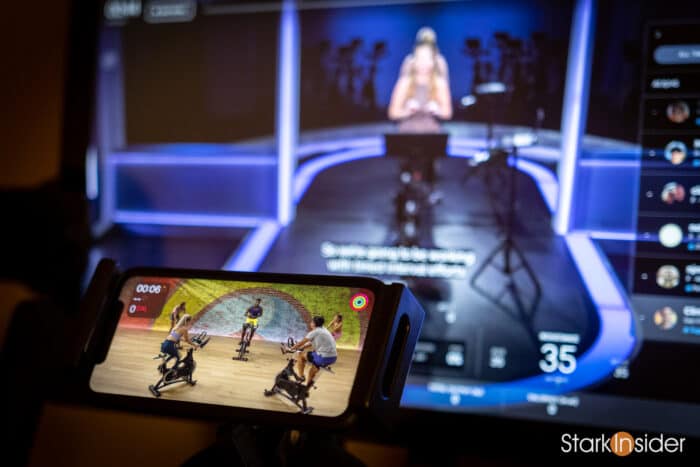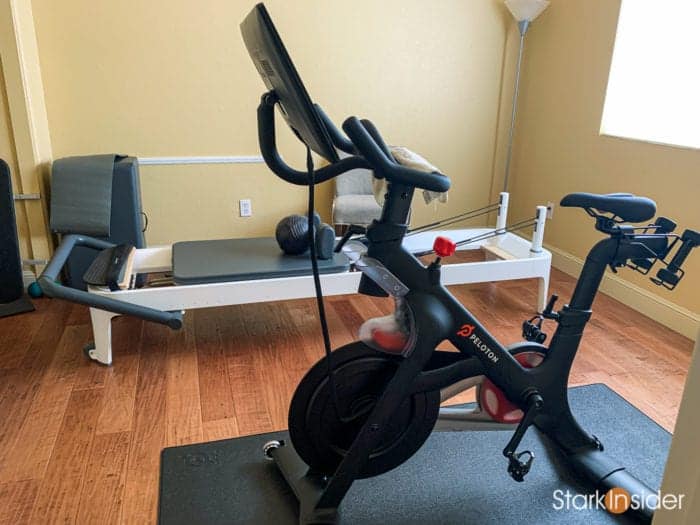Let’s Go.
That’s how Apple’s new fitness app invites you to start a class.
And in true Apple fashion it’s easy to get going with Fitness+. A generous 3-month trial makes it a snap to at least try for those on the fence, and with a few taps you can begin your first class. Choose a class category — cycling, rowing, dance, HIIT, among others — then your trainer of choice followed by your preferred music for the workout and tap “Let’s Go” and you’re off.
Apple’s arriving late to the home fitness market. That hasn’t stopped the company in the past. Recall Google had a huge head start in the wearables race with WearOS and fancy Motorola smartwatches that promised to takes us the end of time and back. How’d that turn out (How it started/How it’s going)? Today the Apple Watch dominates. By a lot. So CEO Tim Cook and team have been here before. Interesting enough, to use Fitness+ you will need to own (and wear) an Apple Watch. Something to keep in mind when budgeting for your home gym.
Fitbit has been offering classes for a while now, and Apple has priced their Fitness+ subscription square on its forehead: $9.99 per month. That’s as good as it gets, and somewhat un-Apple like when it comes to its typical premium positioning. Peloton, on the other hand, is the pricey, up-market option… at least at this point. The digital Peloton app (iOS and Android) costs slightly more at $12.99 per month while its subscription plan for Bike/Bike+ and Tread/Tread+ owners goes for a hefty $40 per month. Still, for those quitting gym memberships and taking their workout regimens into the home the overall cost probably comes down.
As a (pandemic) Peloton owner I was curious to test drive the new Apple Fitness+ app. I downloaded it, started the free trial and later attached my iPhone to my Peloton bike and did a geeky dual ride test. More on that below.
But first, a quick tour of the Fitness+ app itself.
Apple Fitness+ App Tour
Slick dark theme and overall design. After all, this is Apple.
Intuitive, easy to browse classes, trainers, music.
Integration with Apple Music and Apple Health.
Close your rings in real-time.
Strong diversity of classes and trainers.
No in-class social features as found on Peloton (high fives, leaderboard)
But I do really like the dynamic metrics. The top left changes as your class progresses providing timely updates (“Halfway Through”) and also something Peloton doesn’t do, which is display interval timers.
Only $9.99 per month represents outstanding value (vs. $12.99 for Peloton)
Don’t forget: you need an Apple Watch to use Fitness+.
Apple cut no corners when it came to lining up a roster of trainers:
Like Peloton I expect Apple to invest heavily in “star” instructors in order to gain followers and social media standing. It’s worked well for Peloton. Charismatic faces of the brand include Ally Love. They grace magazine covers and interact with fans on Instagram and Twitter. Here’s the profile for Tyrell Désean:
Apple Fitness+ Workouts
Here’s what the 1.0 release of Fitness+ offers in terms of class types:
- Core
- Cycling
- Dance
- HIIT
- Mindful Cooldown
- Rowing
- Strength
- Treadmill
- Yoga
All told there’s 9 in total. That’s a pretty good start, with lots of options for keeping up with your at-home workout routine.
As you’d guess, Apple Music is integrated into Fitness+. Here you can see a track list for a class:
I tried to take a screenshot of a class in progress on my iPhone, but it returned a black screen. Nevertheless you can see some photos below of the app next to the Peloton screen. Compared to the Peloton there’s far less information. For instance, during a cycling class you won’t see things like power and cadence as there’s no sensors to relay that information to the app. But you get the basics and everything you essentially need to track your progress.
On the top left are key metrics such as time spent/remaining in class and your heartrate, in addition to something slick called the Burn Bar (see below). During intervals you’ll see a countdown timer for each — that’s a neat touch and something not found on the Peloton interface.
At the top right you’ll see Apple’s iconic exercise rings (move, exercise, stand). With Fitness+ you can watch them close in real time as you sweat away.
Like Peloton, when a new music track starts a pop-up will briefly show you the title and artist.
Here’s the option scree for metrics, if you want you can switch everything off:
Peloton has a leaderboard. Apple has a Burn Bar.
Basically these are tools to keep you motivated. On Peloton you high-five each other and try to climb the leaderboard (if you want). With Apple the concept is similar though there’s no social interaction. Rather you can see your standing in class by gazing at a bar that depicts your approximate position amongst all who have taken that class. The feature can be turned off for those who don’t want the added stress of competition.
Overall, the UI for Fitness+ is fantastic. Colorful and dynamic, Apple provides just enough information without cluttering up the screen.
As you’ll find on Fitbit, Strava, Peloton and other fitness apps when a workout is complete you get a summary screen. Further, Fitness+ stores a record in the app so you can go back and take a look anytime, and also track trends in the Apple Health app. It’s all very slick with information you could drill down into for hours at a time.
Next, since I’m primarily focused on the cycling experience I did a dual ride comparison test between Apple Fitness+ and the Peloton Bike.
Dual Ride Comparison: Apple Fitness+ vs. the Peloton Bike
Apple appeals to the casual cyclist.
You get fewer metrics, with no power or cadence information.
Apple Fitness+ interface oriented more towards the video game/gamification spectrum (in a good way).
Peloton interface is Tesla-like and much more data dense. As are its post-ride summaries.
Audio mix (instructor’s voice vs. music balance) is excellent on Peloton, and possibly even better on Apple.
Both feature high-end production with multiple cameras and angles. Peloton is setup as a traditional spin class studio. Apple Fitness+ brings more of an urban feeling.
A you can see in the above photo I attached my iPhone to the Peloton. The idea was to test a few things.
For one, what was the caliber of a Fitness+ instructor like, especially in comparison to those found in the world of Peloton?
How good or bad would the on screen controls and metrics be?
And, finally, what kind of post-ride information would I get?
I chose Tyrell’s 20-minute “Latest Tracks” ride and simultaneously started the class alongside a random 20-minute ride on the Peloton. My goal again was to compare the two. I know I wouldn’t get resistance or cadence feedback from Apple, so instead I used the RPM on the Peloton screen to match Tyrell’s call outs. The class was simple enough. 20-minutes of HIIT: 6 intervals (for someone you’re thinking about), a flat road, followed by 4 final intervals (for you!) to close it out.
I have to say, aside from a perhaps over-cheery start and intro, the ride was excellent. My heart rate was elevated by the end, I was huffing and puffing. The mix of banter and motivation seemed about right to me and comparable to Peloton in many ways.
Regarding the set, it feels less intimate than Peloton. With COVID, Peloton now presents classes in empty studios. At first it seemed like a drag, that energy levels would suffer. Not so, in my experience. In fact without other riders you get the feeling that the instruction is 1:1. It’s a more personal experience. Conversations can feel more genuine — and certainly, at times, off the rails goofy and silly fun (like when Jess King “pulls a fire alarm” in the back hall of a “dance club”).
On the other hand, Apple has chosen to have riders alongside its trainers. So in Tyrell’s there was a small group of four others. That was fine. Though it may not ultimately be necessary. It’s personal preference. Those who see gyms and workouts as social experiences might favor this approach.
I will say when it comes to lighting, camerawork and production value, Peloton is the gold standard. By far. You can tell the team pays considerable attention to getting all of that right. There’s definitely a mood. Since I’ve been taken Peloton classes since March, just after the start of the Pandemic, I’ve come to know what to expect and appreciate the format. When I try something new, be it a Fitbit class or in this case a Fitness+ class it can feel off. That doesn’t necessarily mean those classes aren’t good. They just are presented differently.
As for the set itself I again can only compare to Peloton, which is moody with blue shadows and lights that gets me in the right frame of mind for an intense ride.
I can’t speak for anything other than the one cycling class I took so keep this in mind. But whereas the Peloton set is kind of nouveau chic lounge, the Fitness+ set kind of gives off — for lack of a better way of putting it — a “Saved by the Bell” vibe. It just had to be said.
Is Apple Fitness+ Worth it?
Yes.
Absolutely.
There’s a comprehensive catalog of classes covering 9 workout categories with more added each week. Integration with Apple Health and Apple Music will be big pluses for those invested into the ecosystem. It’s very easy to use. Metrics are simple and intuitive. Classes, at least based on my limited look so far, appear fun and engaging with high quality instruction.
A generous 3-month trial makes it easy to try out. As an aside, that’s the same timeframe as Google-owned Fitbit. Peloton offers 30 days. With SoulCycle lagging with a miserly 7 day trial.
At only $9.99 per month after the trial you really can’t argue with the value proposition. That’s on par with Fitbit. And undercuts its obvious major arch-nemesis Peloton who comes in at $12.99 per month for the Digital app ($40 per month for Bike and Tread owners).
I guess the only nitpick for someone contemplating a choice amongst the fitness apps would be that Fitness+ requires an Apple Watch. A few thoughts here.
One, there’s now six generations of Apple Watches. Scan the secondary market and you’ll find plenty of deals. And in any case you’d pay about the same for a Fitbit watch. Also, remember that the Apple Watch acts also as your heart rate monitor. A good one like the Scosche Rhythm+ costs about $90 USD on its own. So if you don’t have a smartwatch you’ll at least need a heart rate monitor. With the Apple Watch you not only get a built-in HRM, but also music control and on wrist metrics, in addition to everything else it offers.
One final probably obvious point.
Android users will not be able to use Fitness+. Instead primary options include Peloton, Fitbit, Strava, among others.
With that here’s a few recommendations.
Apple Fitness+ Options for Cyclists
Fitness+ and Sunny
Buy a low cost Sunny bike on Amazon and you’re off to the home workout races on a dime. A basic bike to be sure, but it won’t break the bank. Add the aforementioned Apple Watch and you have a capable cycling setup. If you want to get fancier consider buying some power meter sensors and using the Cyclemeter iOS app and you’ll get advanced metrics to track your training progress.
Fitness+ and Schwinn
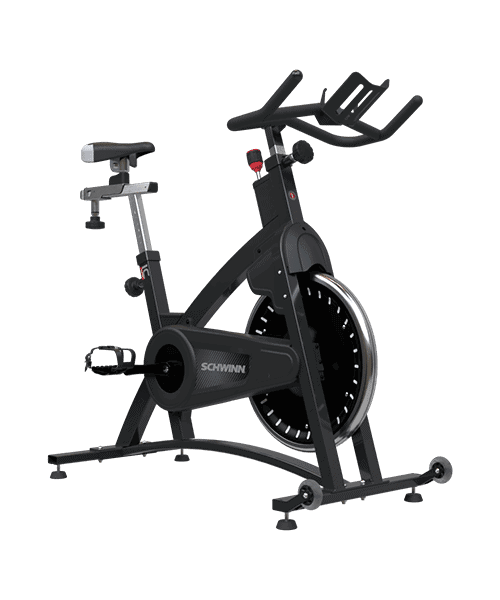
Or up-level and consider Apple’s official recommendations in the Schwinn IC Classic or AC Power indoor bikes.
The former is especially interesting. At $1,199 USD it’s significantly less money than the entry Peloton at $1,895. And it’s a Schwinn. So you know it’s well made and is going to, essentially, last you a lifetime — especially true given there’s no electronics or screen built in so in some ways it’s obsolescence proof.
Is Apple Fitness+ Better than Peloton?
For the pure spin class experience Peloton remains the best. Hands down. The team has had years to perfect the format. Classes are far and deep in variety and level of challenge. The massive 22-inch screen perfects the Peloton experience which makes browsing the interface fun, and emphasizes teamwork and virtual social engagement thanks to an active leaderboard, high fives, and on-going challenges that you can join.
However…
… for someone who just wants an all around workout app to help stay in shape during shelter-in-place then I’d say Apple Fitness+ is without question the best option.
The price is right. The interface is just right for most people. And the Fitness app is likely already installed on your phone. All you need to do is tap the Fitness+ tab and start a trial to see what you think.
ALSO SEE: Peloton Top 10: Best accessories for your bike
I wonder now if Apple is planning to build or brand its own Peloton-like bike? Maybe it’s not necessary. Instead they might continue to focus on the software and content. After all, content is king.
What more can I say. Now it’s up to you.
Let’s Go.

